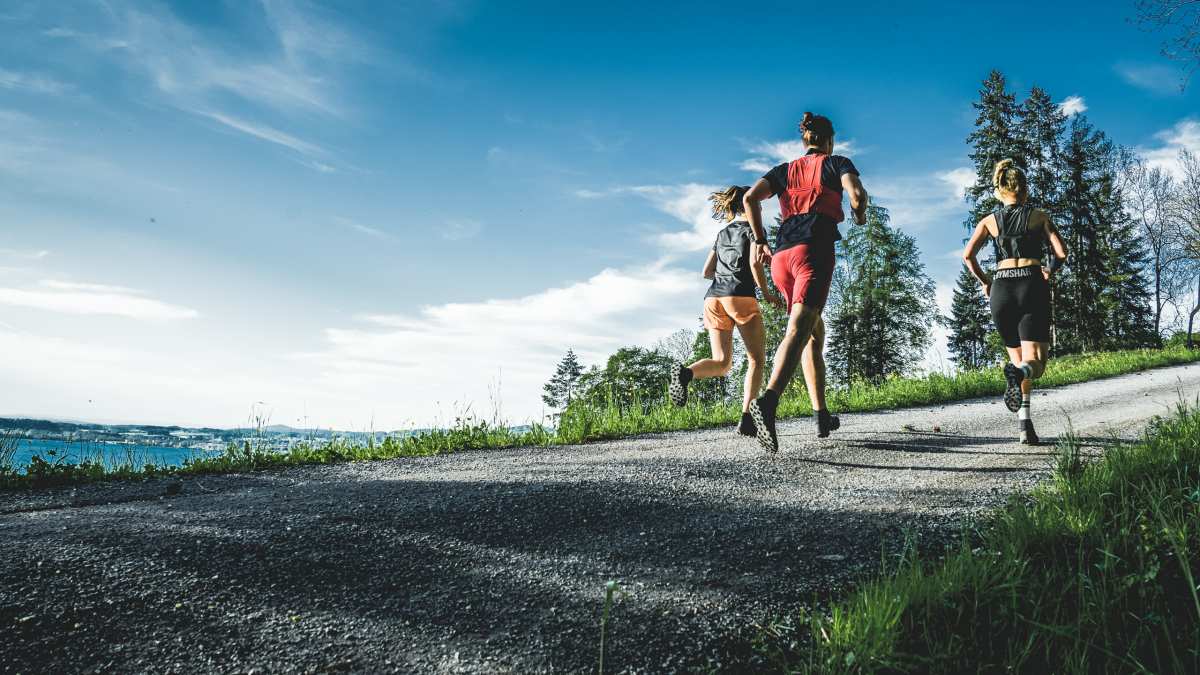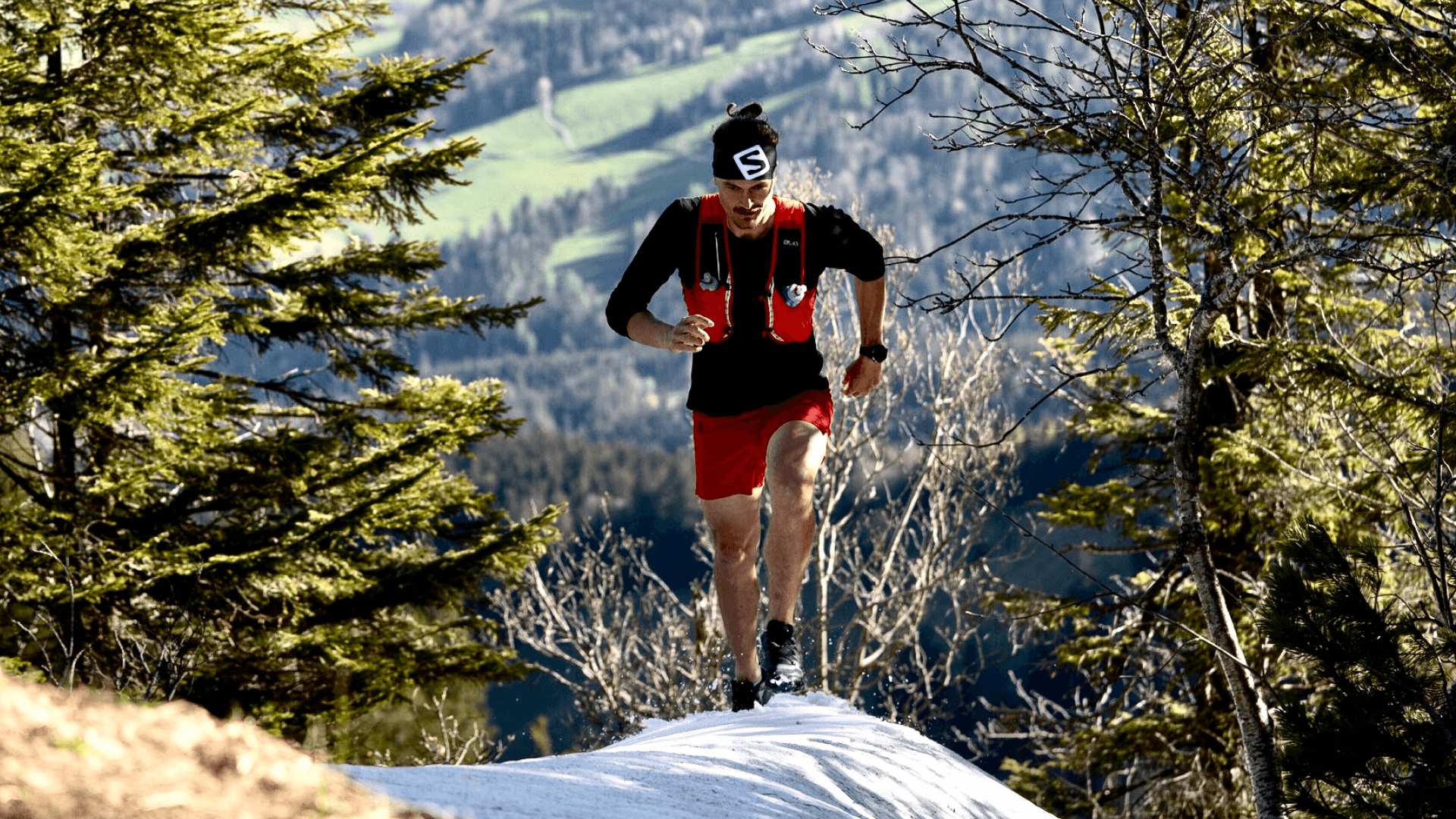
Next Up

Starting out on the trails can be intimidating. So we’ve put together this guide to start you on your trail running journey. While trail running can seem intimidating, it definitely doesn’t need to be. Whether you already run on roads and are looking to transition to the trails, or you have yet to run your first kilometres but love the thought of jogging beneath a canopy of trees, here are some trail-running tips that can help you get started.
Every run on a trail is a unique experience because every trail is different. While some trails are flat, dirt paths that gently wind through a park, most are rolling routes with a variety of unique obstacles and features, such as roots, rocks, gravel, stream crossings, steep climbs and fast descents. You will quickly understand the reasons why trail running has been one of the fastest-growing sports in recent years.
Start where you are and then think about specifics later. If you’re hitting a not-too-technical trail—think no huge elevation changes and relatively even terrain—for your first run, you don’t need special trail shoes or gear. Just go with what you have. If you don’t have trail shoes, that’s okay. You don’t need a specific “trail-running outfit”.
However, once you develop trail confidence and start to run farther for longer, you’ll want to invest in gear that will keep you safe and comfortable when you’re far from home.
As you begin to tackle more complex terrain, your smooth road running shoes may feel less stable. That’s where specific trail-running shoes come in. Trail running shoes tend to have deep treads (the pattern on the sole), which enhance your traction on slick terrain.
You’ll also want to consider the conditions in which you’ll be running when picking out a trail shoe.
Overall, shoe fit and performance are highly individual—it’s impossible to pick one trail-running shoe that's going to be the best bet for everyone. You’ll need to get a shoe that’s comfortable on your foot—whatever that may be. Find that out before you invest in a pair.” Your best bet for finding the right running shoe is to head to a specialized running or outdoor gear store where the staff can offer advice and help you find the perfect fit.
Another key item, especially if you are going long: a hydration vest. If you run for longer than an hour, consider getting one with a larger capacity to carry all the essentials.
It can be tricky to plan your one trails, and we will go into later at another post. If you re new you can just start with the trails listed tat Zug.Run. One thing to remember when planning where to head out to on your trail run is assessing the elevation gain, as this can be taxing on your efforts and add to your run time. Check the elevation gain along your planned route.
One of the best ways to check out new trails as a beginner is to find a friend or running group that knows the area well. When running solo, often a dead-end or impassable terrain can lead to frustration. When running with a partner, it becomes easier to laugh it off as another story of the adventure.
If you are running solo, let at least one other person know you’re out for a run, or use a social running app like Strava so that people know where you are. Even a little call out on social or happy snap on the route can come in handy if something happens (plus you get the kudos from friends and family for being out there running).

Ease into the trails, there are tons of variations with trails—anything from smooth, flat gravel paths to boulder-strewn single track high on mountain ridges—and some are a lot more challenging than the others. That’s why it’s important to start slowly: Begin with shorter distances and smoother trails.
It’s also important to recognize that hiking parts of the trail is actually a huge part of trail running—you’re definitely not going to be going at a running clip the entire time. So, from personal experience, don’t be too hard on yourself if you have to walk! When you need to slow down follow these tips.
Along those same lines, it’s also important to recognize that a trail-running km isn’t an apples-to-apples comparison to a road km. One of the biggest mental challenges of transitioning to trail running from road running is adjusting your expectations. Because of the natural obstacles and elevation changes, your pace will slow down and your typical mileage will feel much more demanding.
“
Let yourself go slower at a comfortable, sustainable pace, even if it means downshifting to hiking on steeper slopes
When starting out in trail running, forget about speed. Concentrate instead on remaining focused on the ground ahead, especially with more technical parts around the uneven or slippery ground. Unlike road running, trail running is much more work on arms for counterbalance and quads instead of calves, especially when hills are involved.
When heading uphill, quick and light steps are the way to go with an upright body (not crouched forward as many amateurs do) and your eyes forward. Use mainly your forefoot to run uphill, focusing less on overall speed and more on the form to get you up the hills efficiently.
One insider tip to get better at downhill running is to hit the gym. Not the weights or the rower, but balancing balls and beams. These are regular parts of professional trail runners’ routines, as it helps them develop the skill and poise as well as stability needed when hurtling downhills.
Lastly, if you find your feet getting hot in certain spots as you run downhill, likely your shoes or socks may need to be adjusted or changed. Cushioning is what matters downhill, so shoes that are too flat below might not be your friends when it comes to the descent.
Aside from the technical aspects of the run, trail running also has a few things to be wary of when out there and are important to note.

Next Up